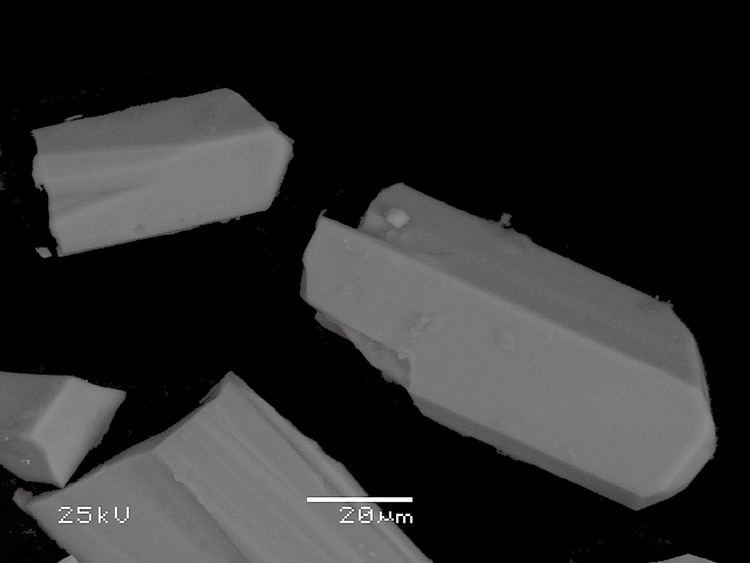Category Carbonate minerals Strunz classification 5.AB.20 | Formula(repeating unit) CaCO3 Crystal system Hexagonal | |
 | ||
Crystal class Dihexagonal dipyramidal (6mmm)H-M symbol: (6/m 2/m 2/m) Space group P63/mmc {P63/m 2/m 2/c} | ||
Vaterite is a mineral, a polymorph of calcium carbonate (CaCO3). It was named after the German mineralogist Heinrich Vater. It is also known as mu-calcium carbonate (μ-CaCO3) and has a JCPDS number of 13-192. Vaterite belongs to the hexagonal crystal system, whereas calcite is trigonal and aragonite is orthorhombic.
Vaterite, like aragonite, is a metastable phase of calcium carbonate at ambient conditions at the surface of the earth. As it is less stable than either calcite or aragonite, vaterite has a higher solubility than either of these phases. Therefore, once vaterite is exposed to water, it converts to calcite (at low temperature) or aragonite (at high temperature: ~60 °C). At 37 °C for example a solution-mediated transition from vaterite to calcite occurs, where the latter one dissolves and subsequently precipitate as calcite assisted by an Ostwald ripening process.
However, vaterite does occur naturally in mineral springs, organic tissue, gallstones, and urinary calculi. In those circumstances, some impurities (metal ions or organic matter) may stabilize the vaterite and prevent its transformation into calcite or aragonite. Vaterite is usually colorless, its shape is spherical, and its diameter is small, ranging from 0.05 to 5 μm.
Vaterite can be produced as the first mineral deposits repairing natural or experimentally-induced shell damage in some aragonite-shelled mollusks (e.g. gastropods). Subsequent shell deposition occurs as aragonite.
